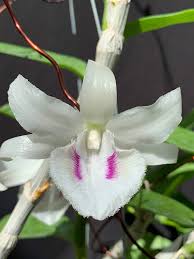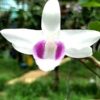# Phalaenopsis Orchids in Environmental Education Activities

Phalaenopsis orchids, commonly known as moth orchids, are one of the most popular and widely cultivated orchid species worldwide. Their stunning beauty, vibrant colors, and adaptability make them a favorite among both amateur and professional growers. Beyond their aesthetic appeal, Phalaenopsis orchids hold significant potential for educational activities related to environmental awareness, conservation, and sustainable practices. This article explores the role of Phalaenopsis orchids in environmental education, highlighting various activities that engage students and the community while fostering a deeper understanding of ecological principles and biodiversity.
## Table of Contents
1. **Introduction to Phalaenopsis Orchids**
2. **The Importance of Environmental Education**
3. **Integrating Phalaenopsis Orchids into Environmental Education**
– 3.1. Biology and Ecology of Phalaenopsis Orchids
– 3.2. Conservation Awareness
– 3.3. Sustainable Cultivation Practices
4. **Educational Activities Involving Phalaenopsis Orchids**
– 4.1. Classroom Activities
– 4.2. Outdoor Learning Experiences
– 4.3. Community Workshops and Events
5. **Case Studies of Successful Educational Programs**
– 5.1. Schools Incorporating Orchids in Curricula
– 5.2. Community Gardens and Orchids
– 5.3. Conservation Initiatives
6. **Challenges and Solutions in Using Phalaenopsis Orchids for Education**
7. **Future Perspectives: Enhancing Environmental Education with Orchids**
8. **Conclusion**
—
## 1. Introduction to Phalaenopsis Orchids
Phalaenopsis orchids belong to the family Orchidaceae and are native to tropical Asia. They are characterized by their large, flat flowers and long-lasting blooms, making them popular in floral arrangements and as houseplants. These orchids thrive in warm, humid environments and are known for their adaptability to various growing conditions.
Beyond their ornamental value, Phalaenopsis orchids offer an excellent opportunity for education, particularly in the realms of biology, ecology, and environmental science. They serve as a gateway to understanding plant biology, ecosystems, and the importance of biodiversity, making them an ideal subject for environmental education initiatives.
—
## 2. The Importance of Environmental Education
Environmental education is crucial for fostering awareness and understanding of ecological issues among students and communities. It equips individuals with the knowledge and skills necessary to make informed decisions regarding the environment and encourages active participation in conservation efforts.
Key objectives of environmental education include:
– **Promoting Awareness**: Understanding the complexities of ecosystems and the impact of human activities on the environment.
– **Encouraging Sustainable Practices**: Instilling habits and practices that contribute to sustainability and reduce environmental footprints.
– **Fostering Conservation Ethics**: Developing a sense of responsibility towards the environment and promoting conservation efforts.
By integrating living organisms like Phalaenopsis orchids into educational activities, educators can create engaging and impactful learning experiences that resonate with students and community members.
—
## 3. Integrating Phalaenopsis Orchids into Environmental Education
### 3.1. Biology and Ecology of Phalaenopsis Orchids
Understanding the biology and ecology of Phalaenopsis orchids provides a foundation for environmental education activities. Key topics include:
– **Plant Anatomy**: Exploring the structure of orchids, including roots, stems, leaves, and flowers. This knowledge can lead to discussions about plant functions, adaptations, and reproduction.
– **Pollination**: Studying the role of pollinators, such as bees and butterflies, in the life cycle of orchids. Students can learn about mutualism, biodiversity, and the importance of pollinators in ecosystems.
– **Habitat Requirements**: Examining the natural habitats of Phalaenopsis orchids and their specific environmental needs. This topic can facilitate discussions about habitat preservation and the effects of climate change on plant species.
### 3.2. Conservation Awareness
Phalaenopsis orchids can serve as a powerful tool for raising awareness about plant conservation. Key points to emphasize include:
– **Threats to Orchid Species**: Discussing the threats faced by orchids, including habitat destruction, climate change, and over-collection. This information can highlight the importance of biodiversity and conservation efforts.
– **Conservation Programs**: Exploring existing conservation initiatives focused on orchids and their habitats. Students can learn about organizations dedicated to preserving orchid species and restoring natural habitats.
### 3.3. Sustainable Cultivation Practices
Educating students about sustainable cultivation practices can promote environmental stewardship. Topics include:
– **Organic Gardening**: Teaching students how to grow Phalaenopsis orchids using organic methods, such as composting and natural pest control.
– **Water Conservation**: Discussing water-efficient growing practices, such as drip irrigation and rainwater harvesting, to reduce water consumption in orchid cultivation.
– **Ethical Sourcing**: Emphasizing the importance of sourcing orchids from reputable nurseries that prioritize sustainable practices and avoid illegal collection from the wild.
—
## 4. Educational Activities Involving Phalaenopsis Orchids
Integrating Phalaenopsis orchids into educational activities can enhance learning experiences and foster a deeper connection to the environment. Here are some engaging activities to consider:
### 4.1. Classroom Activities
– **Orchid Biology Projects**: Students can engage in hands-on projects where they observe and document the growth of Phalaenopsis orchids. They can measure growth rates, analyze flowering patterns, and explore the conditions that affect their development.
– **Pollination Simulations**: Create a simulation of the pollination process, allowing students to role-play as pollinators. This activity can help illustrate the importance of pollinators in plant reproduction and the interconnectedness of ecosystems.
– **Research Presentations**: Assign students to research different aspects of Phalaenopsis orchids, such as their natural habitat, conservation status, or cultural significance. Students can present their findings to the class, fostering collaborative learning.
### 4.2. Outdoor Learning Experiences
– **Field Trips to Orchid Nurseries**: Organizing field trips to local orchid nurseries can provide students with firsthand experience in orchid cultivation. Students can observe various orchid species, learn about care practices, and interact with growers.
– **Nature Walks**: Conducting nature walks in nearby parks or botanical gardens allows students to explore local flora and fauna. Students can search for native orchids and discuss their ecological roles in the environment.
### 4.3. Community Workshops and Events
– **Orchid Care Workshops**: Hosting workshops for the community on how to care for Phalaenopsis orchids can promote sustainable gardening practices. Participants can learn about potting, watering, and pest management while engaging with local horticulturists.
– **Orchid Exhibitions**: Organizing orchid exhibitions can raise awareness about the beauty and diversity of orchids. These events can feature educational booths, interactive displays, and opportunities for community members to learn more about orchid conservation.
—
## 5. Case Studies of Successful Educational Programs
### 5.1. Schools Incorporating Orchids in Curricula
Many schools have successfully integrated Phalaenopsis orchids into their curricula, enhancing students’ understanding of biology and environmental science. For example, a high school in Florida established an orchid club where students actively cultivate Phalaenopsis orchids. They learn about plant biology, participate in local orchid shows, and engage in community outreach programs.
### 5.2. Community Gardens and Orchids
Community gardens that incorporate Phalaenopsis orchids into their design provide opportunities for residents to learn about sustainable gardening practices. These gardens often host workshops, allowing participants to gain hands-on experience in orchid care while fostering a sense of community and environmental stewardship.
### 5.3. Conservation Initiatives
Organizations focused on plant conservation have recognized the educational potential of Phalaenopsis orchids. Programs aimed at protecting native orchid species often involve educational components that teach participants about the ecological significance of orchids and the importance of habitat preservation.
—
## 6. Challenges and Solutions in Using Phalaenopsis Orchids for Education
While Phalaenopsis orchids offer numerous educational opportunities, challenges may arise in their use for environmental education. Some potential challenges include:
– **Limited Resources**: Schools and communities may face budget constraints when acquiring orchids or materials for educational activities. To address this, educators can seek partnerships with local nurseries or conservation organizations for support.
– **Climate Considerations**: Depending on the region, growing conditions for Phalaenopsis orchids may vary. Educators can adapt activities to suit local climate conditions, such as focusing on indoor care during colder months.
—
## 7. Future Perspectives: Enhancing Environmental Education with Orchids
The future of environmental education can greatly benefit from the incorporation of Phalaenopsis orchids. By fostering a love for plants and nature, educators can inspire future generations to become active participants in conservation efforts. Key steps for enhancing environmental education with orchids include:
– **Expanding Curriculum Offerings**: Schools can develop comprehensive programs focused on orchids, integrating science, art, and environmental ethics into a cohesive learning experience.
– **Community Engagement**: Encouraging community involvement in orchid cultivation and conservation initiatives can create a network of support for environmental education efforts.
– **Utilizing Technology**: Incorporating technology, such as virtual field trips and online workshops, can broaden access to orchid-related educational resources, reaching a wider audience.
—
## 8. Conclusion
Phalaenopsis orchids offer a unique and engaging way to promote environmental education. Their beauty, adaptability, and ecological significance make them an ideal subject for educational activities that foster awareness, conservation, and sustainable practices. By integrating Phalaenopsis orchids into classroom learning, outdoor experiences, and community initiatives, educators can inspire a deeper understanding of the environment and the importance of biodiversity.
As the world faces increasing environmental challenges, the role of education in fostering responsible stewardship becomes ever more crucial. By leveraging the educational potential of Phalaenopsis orchids, we can cultivate a generation of
environmentally conscious individuals dedicated to protecting our planet for future generations.
—
This article serves as a guide for educators and community leaders looking to incorporate Phalaenopsis orchids into their environmental education initiatives. Through hands-on learning experiences and community engagement, we can create a more sustainable and environmentally aware society.

